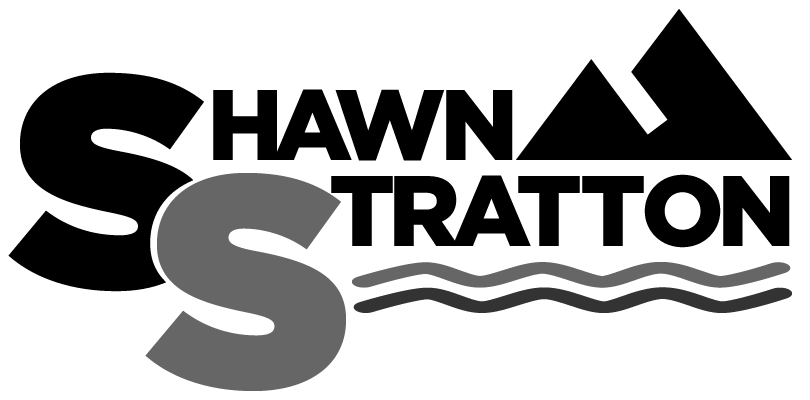
by Shawn Stratton | Nov 5, 2015 | Blog Posts
The fundamental role of leaders is to set their team up for success. For any leader to be successful, the team needs to be successful first. The famous former CEO of General Electric, Jack Welch had tremendous success because his business team was successful. The NBA basketball coach Phil Jackson achieved extraordinary success because of how his teams performed. You may think “that’s because they had some all stars on their team” but most teams have a few all-stars and that far from guarantees success. Setting up a new team for success means you need to put the work in early and often so you can watch them blossom later on. The first week on an expedition with a new team was always the busiest. Not only did the team need a lot of direction and instruction from their leaders, but also they needed clear expectations and established norms to work within. An essential part of a leader’s role is establishing expectation and guiding the development of norms within the group. Without a conscious effort to deliver these early and often in the begining stages of a team’s development, you are doing a disservice to the team and are not setting them up for success. You are the leader, the role model, and they are watching your every move. If you show up late to meetings, they will start coming late. If swearing is part of your vocabulary, they will start swearing more often. If you send emails on the weekend, they will expect they need to work on the weekends. If you don’t address inappropriate behavior, they will...

by Shawn Stratton | Oct 29, 2015 | Blog Posts
You are the leader, you think and act differently than your team, stop expecting or wanting them to think like you. Many leaders I have worked with have a common complaint: their team doesn’t look at or even get the big picture. They are not committed, and are not flexible in their role. The fact is most of your team members want to do a good job at their specific tasks to help the team move forward in reaching the team’s goal. They also want to cover their ass and leave work on time. As a leader, you can be ok with this because they are filling their responsibility to move the team forward. They are also not stressing about concerns and needs not related to their responsibility or laying around on vacation thinking about new initiatives to implement in the organization or how they are going to make payroll on Friday or how to reinvest last year’s profits. As a leader, this can be frustrating at times because you just want to shout ‘Don’t you get it? Don’t you care?’ But their job is not to “get or care about everything” going on in the team and department/organization. That is your job. You are the one to connect the dots. You are the leader. As a leader, I often feel I need eyes in the back of my head so I can see absolutely everything that is going on in my team when I am stress about a particular aspect of a project. I found myself in this predicament when I founded and directed a community triathlon for...

by Shawn Stratton | Oct 22, 2015 | Blog Posts
One of the most mentally challenging expeditions I ever led was with a client who had a high conflict and disruptive personality. I didn’t experience any of the usual things that make wilderness expeditions extra challenging. No one was physically injured, the weather was not grim, and we had plenty of food. What made it so difficult on me was the mental anguish myself and the rest of the team went through dealing with one client. High conflict and disruptive personalities usually are two different traits displayed by people. These challenging people typically display one or the other but not usually both. Unfortunately, this particular client displayed both. I highlight this story in my book TEAMS ON THE EDGE. (Receive a free copy of the eBook here) Below I will highlight the specific traits of these personalities and some courses of action you can take to manage them. Dramatic Traits Associated With High Conflict Behavior Include: Blaming others All or nothing behavior Not self-aware Explosive emotion Intense focus on imagined slights Passive aggressive behavior Anti-social behavior Course of Action: Listen, Maintain Consistency and Objectivity Create Structure Reframe Create Consequences: Seek to engender shared responsibility for problem solving When the person approaches you with aggressive language and tone about a conflict, I recommend you use the BIFF (Brief, Informative, Friendly, Firm) technique Bill Eddy, president of the High Conflict Institute developed, in response. The initial conversation in any conflict is critical if the situation is to be resolved successfully. To see the BIFF technique, which can also be used in an email, demonstrated check out this short video. Dealing with...

by Shawn Stratton | Oct 16, 2015 | Blog Posts
Could you be happier at work? Could you be more effective in your job? If you answered yes to either of these questions, there is probably someone or something that is affecting your happiness and effectiveness. Your ability to do your job is not holding you back. It is your ability to get along with others. Most people have no idea the affect their behavior has on others. Over time, our workplace quirks accumulate and chip away at goodwill. Pet peeves in the workplace initially produce only a mild annoyance, but over time can produce a much more negative emotional response, in turn greatly affecting your happiness and effectiveness. Research from the International Association of Administrative Professionals into workplace pet peeves divided their finding into social and environmental annoyances. Topping their list of social pet peeves were coworkers’ irritating habits and disruptive office gossip, while uncontrollable room temperatures, noise and unacceptable air quality topped the list of environmental concerns. Here are the top 5 social pet peeves in the workplace. Co-worker’s Irritating Habit: 36% Office Gossip: 25% Overbearing/Difficult Boss: 25% Foul Language: 18% Speakerphones: 12% Further research in the Journal of Social Psychology found that of the co-workers irritating habits, the top frustrations were smacking gum, mumbling, not listening, complaining, uncleanliness, and being late. The major problem with fixing these social pet peeves is the person performing the annoying behavior, in most cases, has no idea their actions are bothering you. Sadly, your behavior is probably affecting someone else as well and you have no idea. To see more common workplace pet peeves check out this list of hilarious and...

by Shawn Stratton | Oct 8, 2015 | Blog Posts
Life is not fair. How many times did you hear that growing up? “People expect their leaders to help them to achieve the common task, to build the synergy of teamwork, and to respond to individuals and meet their needs” ― John Adair I often get questions on how to deal with people in certain situations in leadership interacting or communicating with a team, such as what ratio of positive to constructive feedback to give people. The answer and with many questions in leadership is “it depends”. There are few hard and fast rules to leadership (Marshall Goldsmith highlights a few here) but many gray areas because you are dealing with people and people are different and ever-changing and thank goodness for that. The answer to the feedback question is it depends on the person. Some of us need more praise than others for the feedback to be absorbed and applied and others need just a little. Treating Them Fairly Doesn’t Mean Treating Them The Same. How do you treat your team members differently without upsetting other team members? The answer is to treat them as individuals, not a generic group. As I discussed in this post, teams are built one relationship at a time. People have different needs, performance levels, personalities, work styles, motivations, and goals. As a leader, you need to treat your team members the way they need and want to be treated to feel appreciated and empowered in whatever message you are conveying. Once you take this approach, the team members won’t be concerned about how you are treating others because their needs are being met....

by Shawn Stratton | Oct 1, 2015 | Blog Posts
To be the most effective leader, you need to leverage your strengths and delegate your weaknesses(as mentioned in a previous blog ) or develop systems to address them. But how do you discover your strengths? Many people, even some senior leaders, don’t realize what their true strengths are. Many times, you are placed into leadership positions not because of your strengths but because of your formal education, number of years of experience in your field or with the company or perhaps you talked your way into a position you were under qualified for. One of the keys to being a successful leader is to leverage your strengths. But how do you know what your strengths are and how they can best support you in a leadership position? Here are three ways to discover your true strengths: 1. What Is One Skill You Possess That People Admire? It could be your negotiation skills, your organizational skills, your public speaking skills, your ability to build or fix things, etc. If people admire you for it, there is a good chance it comes relatively easy for you and you enjoy doing it. 2. What Is The One Or Two Things Friends Come To You For Advice On? It could be anything, from relationship, fitness, and travel, to accounting, or leadership advice. Whatever it is, you are most likely effective in the area and you should consider it a strength. 3. What Do You Lose Track of Time Doing? In other words, when do you experience flow? In positive psychology, flow, also known as the zone, is characterized by complete absorption in what one does. Academic literature...

by Shawn Stratton | Sep 24, 2015 | Blog Posts
My recent triathlon result has renewed my desire (and need) to track the time I spend on my business. If you are like me, you have struggled with different aspects of work or life in general and after some time of scratching your head, or even banging it against a wall, you wondered why you weren’t seeing an improvement. Where you put the most time and energy, you get the best results. This may seem obvious but for a moment think about a few areas in your work or life outside of the job that you are responsible for that you would like to see improved. At work, it could be your sales leads, sales completed, productivity, your relationship with an individual or your team, the quality of your writing, or negotiating, etc. In life, it could be your relationships with a friend or family, your nutrition, your sleep habits or your leisure time, etc. For a week, keep an activity log, detailing what you are spending your time on in a given workday. For many of you, this can be surprisingly easy with all the different activity tracking apps available to track which computer applications and websites you send your time on. If your computer is on, these apps are tracking what you are doing. For those who don’t spend a majority of their day using a computer, there are several other time tracking apps available to download on their smartphones, which make it pretty easy to record what your time is spent on. After a week take a good look at the percentage of time and energy...

by Shawn Stratton | Sep 17, 2015 | Blog Posts
Your ‘Happy Place’ could be a moment in time, a location, or a feeling. It brings you to a state of flow where everything is moving in the right direction. You may lose track of time, you are having fun and are living a passion. Does that place, time or feeling come to mind right away? If so, great. You can stop reading now and go there, do it, feel it! If you feel denial, resistance, or confusion when trying to identify your Happy Place, read on and I will help you discover how to find it. The other day I was listening to the Rich Roll podcast when he was speaking with James Altucher about many aspects of their lives. It wasn’t a classic interview. It was more of a conversation where they were both asking the questions. When the conversation shifted to what they want to be doing in the future, both of them said “I don’t know”, but they were thrilled to be working in their Happy Place right now and expected that to continue long into the future. Both in their late 40s, they have had what many people would see as extremely successful lives. James founded and sold several companies worth millions as a young entrepreneur and Rich was a Stanford swimming star and a corporate lawyer. But what appears to have shaped these guys the most is their catastrophic failures, James spending away his fortune several times and Rich battling a crippling alcohol addiction. Today, neither of these guys are doing the work or leisure activities that led to these extreme challenges. James...

by Shawn Stratton | Sep 10, 2015 | Blog Posts
You know Jack, he’s good at all trades and a master of none. But what is he like as a leader? He’s ok, but not nearly as effective as he could be. Leaders often feel pressure (most of it self-imposed) to be extremely competent in all aspects of leadership and areas they are leading. The problem is they are not as effective as they could be if they focused on leveraging their strengths and delegated their weaknesses. When you think of successful leaders you admire in your community or the world stage, they are usually known for one or two aspects of their leadership qualities. When you think of that person, I bet their strengths come to mind without much thought. They may be great organizers, visionaries, communicators, accountants, or marketers, etc. What you probably don’t know are their major weaknesses. These leaders have found ways to ensure the important areas they are weak in are covered by other competent people or systems. Now, think of a leader you have struggled with in the past or have little respect for. There is a good chance their weaknesses are causing the struggle and they have not developed a way to compensate for it. As a leader, there will be situations when your weaknesses may openly affect your leadership ability before you are able to delegate or develop a system to deal with it. In these cases, it is best to admit your weakness, get the help you need and move on rather than cover it up or blame others. My Weakness I learned this lesson the hard way. When leading...

by Shawn Stratton | Sep 3, 2015 | Blog Posts
I was recently asked a question by a leader who was struggling with his team. He asked, “How do I influence team members who may not be at my maturity level, and not under my direction. They spend our time whining or deviating from the work at hand (distracting), even after we established principles.” The simple answer: add more value to them. You see leadership is about having influence. Add more value gain more influence. Of course, the follow-up question would be “that’s nice, so how do I add more value to my team members?” As a leader, there are many ways to add value to your team members. Below is a list of 10 surefire ways to add more value to your team. If you are struggling with the level of influence you have on your team, ask yourself at what level are you adding value to the lives of your team members? A good exercise would be to go through the list and grade yourself from 1 to 10 on each item. Provide Learning Opportunities In And Outside The Organization – Invest in their education Role Model The Behavior You Expect – Their respect grows as they watch your every move. Maximize Their Strengths – Allow them to build on their mastery. Provide Constant Quality Feedback With A Ratio Beyond 3:1 Positive To Constructive – The greatest learnings come from feedback, show them you care. Trust Them – Allow them to make real decisions that are in alignment with their skills, training and experience. Encourage Taking Educated Risks – Great achievements and discoveries are never achieved without...

















